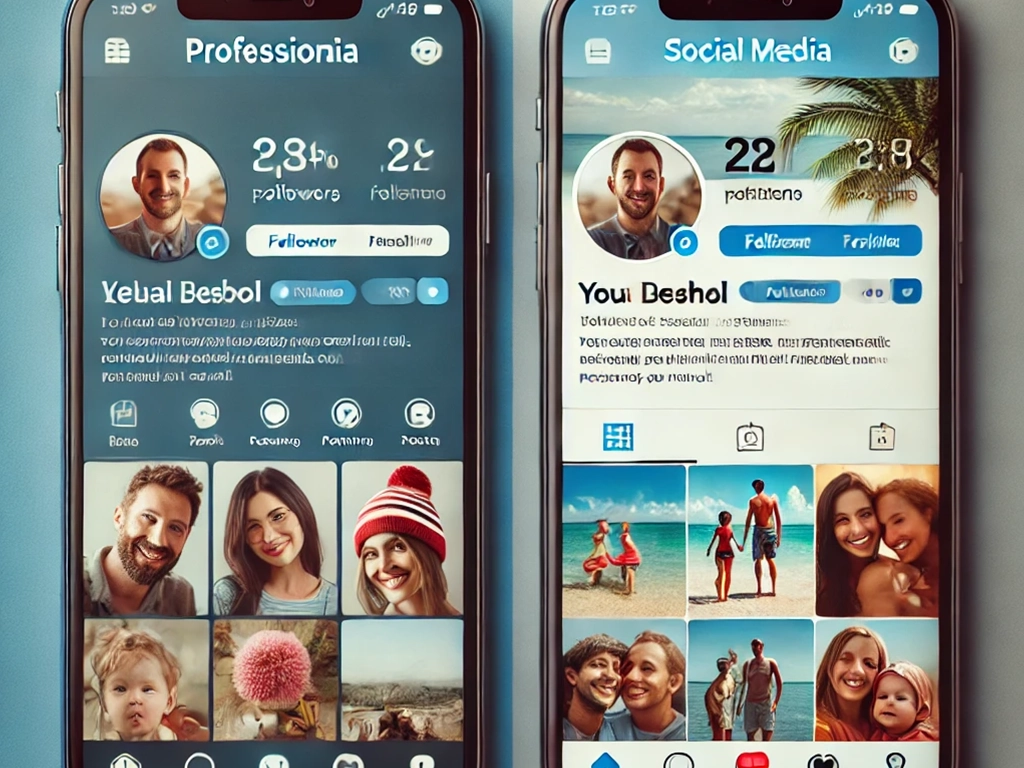Social media provides powerful platforms for journalists, press photographers, and media professionals to showcase their work, build a good reputation, and connect with audiences. However, it can be a challenge to present yourself seriously and maintain professional credibility in this fast-paced environment. The United States Press Agency® (USPA) provides important tips on how to master social media while maintaining high journalistic standards.
The importance of social media for media professionals
Social media is no longer just an occasional networking tool. It has become an integral part of professional communication. Platforms like Instagram, Facebook, LinkedIn, and X (formerly Twitter) allow media professionals to:
- Share breaking news and exclusive insights
- Present photographic work to a wider audience
- Connect with editors, publishers, and potential customers
- Establish yourself as trustworthy and credible voices in their field
However, the fast-paced nature of social media requires strategic thinking. Without careful planning, your content can lose its impact and your professionalism could be overlooked. Knowing how to present yourself effectively will give your expertise the attention it deserves.
1.Establish a clear identity

Your social media presence should reflect your professional personality. Decide how you want to be perceived:
- Are you an investigative journalist who focuses on political issues?
- Do you specialize in sports photography or cultural reporting?
Your bio, profile picture, and content should match that identity. Use a professional photo, add your references, and create a bio that clearly highlights your expertise. A well-defined identity allows potential customers, publishers, or readers to quickly understand who you are and what you offer. Avoid vague descriptions and focus on clear, concise language that presents you as a credible media professional.
2.Focus on high-quality content
Consistently publishing high-quality content is crucial to building a serious and credible image. Prioritize:
- Well-researched articles with reliable sources
- Clear, impactful photos with the right composition
- Powerful captions that add contextual and background information
High-quality content stands out in a crowded digital space. Instead of chasing trends or viral moments, focus on posts that add value. For example, if you’re a photojournalist, post images that tell a compelling story or highlight important social issues. Adding detailed captions that explain the background of your work shows depth and expertise and encourages viewers to see you as a reliable source of information.
3.Separate personal and professional profiles

It is advisable for journalists and media professionals to maintain a clear boundary between their personal and professional presence on the Internet. A dedicated professional account allows you to:
- Control the tone and focus of your content
- Protect your privacy
- Maintain a consistent professional image
If you prefer to combine both profiles, make sure that the personal content remains appropriate and aligns with your professional values. Avoid sharing private opinions that could undermine your professional credibility. Focusing your professional page on relevant content will ensure that you attract the right audience to your work.
4.Choose the right platforms
Not all platforms are equally suitable for professional media work. Consider the platform’s strengths:
- Instagram: Ideal for photojournalists and visual storytellers
- X (Twitter): Best for breaking news, industry updates, and engaging discussions
- LinkedIn: Perfect for networking with industry professionals
- Facebook: Useful for building communities and engaging in groups
Choosing the right platform will help you connect with your target audience more effectively. Instagram’s visual nature makes it a powerful tool for photojournalists, while journalists who share breaking news can benefit from X. LinkedIn’s professional focus is particularly effective for showcasing published work, project collaborations, or awards.
5.Build trust through transparent communication

Journalists and photographers thrive on trust. In social media, transparency is the be-all and end-all:
- Clearly indicate when content is sponsored or part of a collaboration
- Provide reference sources and context for shared information
- Avoid manipulating images or posting misleading content
By following these principles, you will strengthen your reputation as a credible and reputable professional. Authenticity is crucial, and audiences respond best to media professionals who demonstrate integrity. Avoid exaggerating accomplishments or posting information that cannot be verified, as this can quickly damage your professional reputation.
6.Interact with your audience professionally
Social media is interactive, and engagement is crucial to building your reputation. However, professionalism must always be in the foreground. When interacting with followers:
- Respond to comments respectfully and thoughtfully
- Avoid heated debates or aggressive reactions
- Clear up misunderstandings with facts instead of emotions
Constructive discussions show your expertise and position you as a trusted authority. Taking the time to respond to thoughtful questions or correct misinterpretations will strengthen your reliability. Keep in mind that online conversations can escalate quickly, so it’s important to maintain a calm and professional tone.
7.Present your successes strategically

Sharing professional milestones is important, but it should be done tastefully. Consider posting about:
- Published articles or photo reports
- Nominations or recognitions
- Successful collaboration with media or customers
When you share achievements, focus on the value they provide to your audience rather than bragging about it. For example, instead of simply posting an award, describe the hard work, research, or dedication behind your achievement. This approach helps your audience see your credibility and inspires engagement without seeming arrogant.
8.Protect your work and reputation
As a media professional, your content is your intellectual property. To protect your work:
- Watermark important images to prevent misuse
- Register valuable content with copyright authorities
- Regularly monitor mentions of your name or work to detect abuse
In addition to protecting your work, make sure you comply with copyright laws when sharing content created by others. Always mention photographers, journalists, or researchers when they refer to their work to maintain ethical standards.
9.Develop a Publishing Plan
Consistency is key to maintaining an engaged audience. Create a content calendar that includes:
- When to post updates or insights
- What types of content you will focus on (articles, images, interviews, etc.)
- Time slots when your audience is most active
Strategic planning prevents rushed, low-quality content and ensures constant transparency. By following a regular posting schedule, you build trust with your audience and keep your professional image active. Avoid excessive posting; Instead, focus on well-thought-out content that leaves a positive impression.
10.Balance professionalism and authenticity
While it’s important to maintain professionalism, don’t be afraid to show some personality. Sharing behind-the-scenes insights, humorous observations, or personal anecdotes (if appropriate) can make your presence more human and make your content more relatable. The key is to balance authenticity with a tone that matches your professional image. People are often drawn to authentic creatives who combine expertise with genuine commitment.
Bonus Tips for USPA Members
As a USPA member, you’ll get access to resources to help you improve your social media presence:
- Workshops on storytelling techniques for digital platforms
- Guide to Ethical Social Media Practices for Journalists
- Networking opportunities to connect with established media professionals
By implementing these strategies, you can successfully showcase your work on social media without compromising your professionalism. The USPA encourages all members to view social media as an opportunity to build credibility, expand their reach, and connect with new audiences while maintaining journalistic integrity.
